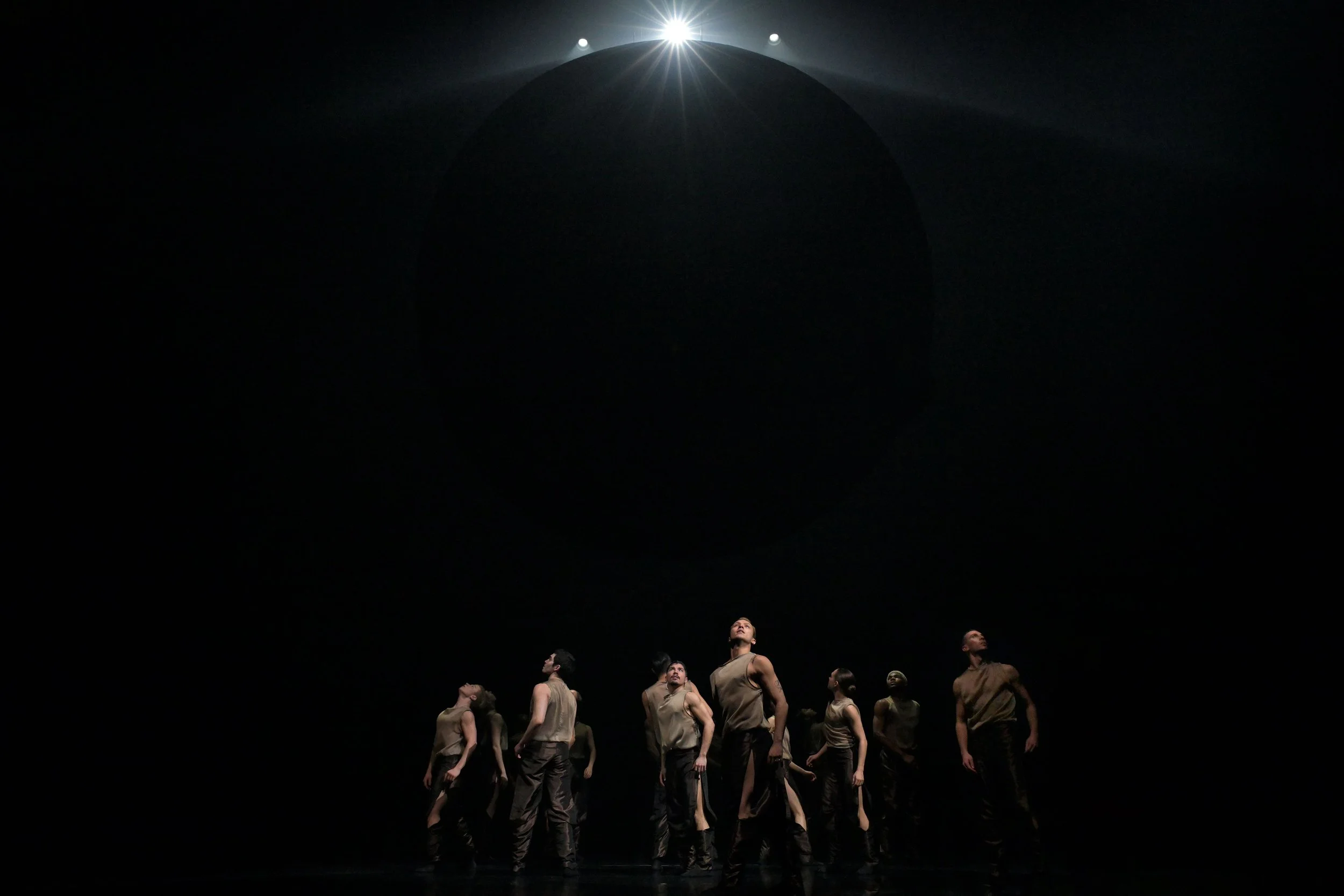Kasandra "La China" finds fresh ways to stoke flamenco fire through pandemic
As Mozaico Flamenco dancer debuts a form-pushing show, she’s also reaching new students online
The Dance Centre streams Mozaico Flamenco from April 15 to 28.
FOR JUST A SMALL illustration of how Kasandra “La China” has been keeping flamenco alive during COVID-19, check out her Youtube videos from the very first weeks of lockdown last year.
Her Mozaico Flamenco studios shuttered and the world in a state of limbo, Kasandra headed out to the North Shore forest near her home. Day 9 Bulerias (see below) finds her stamping out a fiery rhythm on the boardwalk of the Mosquito Creek trail, swirling her red wool scarf instead of a Spanish shawl. Day 10 features the artist in her boots, under the drizzle, a jaunty pink umbrella in one hand, a dogleash in the other, pummelling another trail at Grouse Mountain.
If the pandemic has proved anything, it’s that La China is unstoppable. She’s found a keen new group of students for her art form on line, and she’s managed to perform—including an online showing this week via the Dance Centre.
What makes this remarkable is that flamenco is traditionally an artform that relies heavily on its live atmosphere. Born out of the crowded, smoky tablaos of southern Spain, it draws its mysterious passion—its duende—from connection. The dancer feeds off the live energy of the guitarist, the cantaor, and the palmistas.
“Flamenco is a really hot, passionate art form,” the Mozaico artistic director explains. “It requires face-to-face. And a lot of really famous tablaos are out of business in Spain.”
Kasandra, who’s travelled many times to Spain to further her practice, points out many of that country’s most exciting talents have had to stop dancing and pick up other work. “The future of flamenco hangs in the balance,” she says. “The world’s best artists are grounded, with no jobs.”
That’s what makes her own efforts to keep it alive all the more remarkable. Not that it’s been as easy as it looks, she confesses.
“The emotional shocker was using Zoom,” the energized dancer and teacher says with a wry laugh. “Putting the sound of the feet and the voice on top of the music: that was actually epic, because it required a huge setup. But within two weeks I was able to get the dance academy up on Zoom.”
It was worth the effort, and the endless fiddling with microphones and laptops in her home studio. Even afterward, when small group classes were re-allowed, online lessons continued to flourish.
“Zoom is a huge success,” she reveals, adding she finds it a great tool for the technical breakdown of the form’s famously intricate footwork and rhythms. “More than half the school is on Zoom now.”
What Kasandra has discovered is a whole new group of students who might not have had the guts to follow their flamenco dreams into a studio with other people. Think working mothers in their 40s and 50s who have the money and desire to do something novel. At first they don’t turn their home cameras on; then slowly, there they are, in their sweatpants at home—eventually pulling out the fiery red lipstick and skirts.
“I see a magical transformation,” Kasandra marvels, “their inner divine feminine coming out. It seems to be extremely empowering….These are highly empowered women who are working way too hard at home; they can’t get off work now! So flamenco at home is a scheduled ongoing date for them. If they don’t schedule that break they’re gonna work into the night!”
Though the students are mostly from BC, she’s got some as far away as Puerto Rico and Hong Kong, and is working on a flamenco-on-demand video series for those further afield.
And so it is that flamenco can be kept alive outside of Spain, with the home of flamenco particularly hard-hit—economically and virus-wise, with a government showing little support for its artists, Kasandra says.
“It’s going to be the foreigners that are going to take flamenco into the next 100 years,” La China asserts.
If Kasandra displays extra pluck and versatility, it may be in part due to her unconventional background. She holds a business degree from UBC and studied violin at the Vancouver Academy of Music before discovering flamenco in the 1990s, studying under local legend Oscar Nieto, and falling wholeheartedly under its spell.
That same dedication has driven her to advance her art form in innovative ways in recent years—including a wildly culture-crossing collaboration with Filipino-Canadian contemporary-dance artist Alvin Tolentino, Indo-Canadian Bharatanatyam dancer Sujit Vaidya, and Montreal voice artist Gabriel Dharmoo at the end of 2019. She continues to create with Co.ERASGA’s Tolentino.
That spirit of exploration and cultural fusion will be evident in her uplifting new program, pre-recorded by videographer Chris Randall and streaming via the Dance Centre starting April 15.
“All my program is so happy,” she emphasizes. “It’s fairly colourful, celebrating the mere fact that I’m dancing!”
It includes Alegrias, based on a song of joy from the storied port town of Cadiz, and featuring a giant, swirling silk shawl called a manton de Manila.
Elsewhere, Colombiana is a hat dance influenced by styles from Colombia—part of the De Ida Y Vuelta song forms, when flamenco was influenced by Latin America. It features a new song commissioned from Cuban-born composer Josué Tacoronte. She dances with both Spanish and Chinese fans.
And then there’s Tangos del Titi, cheeky, feminine dance coming from the neighbourhood of Triana in Seville. “I’ve got a huge yellow dress and a big red hat, so you can’t miss me!” she quips.
The program, though online, shows Kasandra “La China” at her versatile best, blending forms and rhythms as much as cultural inspirations. “It’s more about finding my Canadian identity,” she says of the state of her practice now. “That’s how I’m going to bring flamenco forward.”














